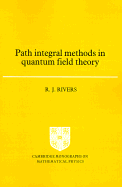Book contents
- Frontmatter
- Contents
- Preface
- 1 Scalar Green functions and their perturbative solutions
- 2 Connected Green functions and their one-particle irreducible components
- 3 Regularisation and renormalisation
- 4 The scalar functional integral
- 5 Series expansions and their summation
- 6 Taking the path integral more seriously
- 7 Quantum theory on non-simply-connected configuration spaces
- 8 Stochastic quantisation
- 9 Fermions
- 10 Quantum electrodynamics
- 11 Non-Abelian gauge theories
- 12 Explicit symmetry breaking and its classical limit
- 13 The effective potential
- 14 Field theory at non-zero temperature
- 15 Field theory at non-zero temperature: real-time formulation
- 16 Instantons
- 17 Composite fields and the large-N limit
- References
- Index
5 - Series expansions and their summation
Published online by Cambridge University Press: 04 April 2011
- Frontmatter
- Contents
- Preface
- 1 Scalar Green functions and their perturbative solutions
- 2 Connected Green functions and their one-particle irreducible components
- 3 Regularisation and renormalisation
- 4 The scalar functional integral
- 5 Series expansions and their summation
- 6 Taking the path integral more seriously
- 7 Quantum theory on non-simply-connected configuration spaces
- 8 Stochastic quantisation
- 9 Fermions
- 10 Quantum electrodynamics
- 11 Non-Abelian gauge theories
- 12 Explicit symmetry breaking and its classical limit
- 13 The effective potential
- 14 Field theory at non-zero temperature
- 15 Field theory at non-zero temperature: real-time formulation
- 16 Instantons
- 17 Composite fields and the large-N limit
- References
- Index
Summary
Let us recapitulate. Although the form (4.32) for the path integral was motivated by analogy with finite-dimensional integrals, in no way is it a definition. Rather, as we have stressed repeatedly, it is an algorithm for handling the Feynman perturbation series. Strong coupling apart, all the manipulations of the path integral that we have performed (integration by parts, the introduction of auxiliary fields, the inclusion of background fields) stand in one-to-one correspondence to rearrangements of the perturbation series. In fact, path integrals are unnecessary in the derivation of expressions like (4.50). See Fried (1972), for example. The path integrals are as rigorous – or non-rigorous – as the series, irrespective of whether they can be given proper mathematical definition or not.
At the same time, the analogy with finite-dimensional integrals suggests approaches that go beyond this purely operational stance. In particular, because of the dominant role played by the classical action in the path integral formalism we would like to use it to establish the relation of quantum dynamics to classical dynamics.
This is the most compelling reason for introducing the path integral formalism, requiring a distinct relaxation in our treatment of it. By formal analogy with finite-dimensional saddle-point and stationary-phase methods, elevating the classical action to the phase of the integrand promotes series expansions in ħ as the natural way to proceed.
- Type
- Chapter
- Information
- Path Integral Methods in Quantum Field Theory , pp. 81 - 108Publisher: Cambridge University PressPrint publication year: 1987



